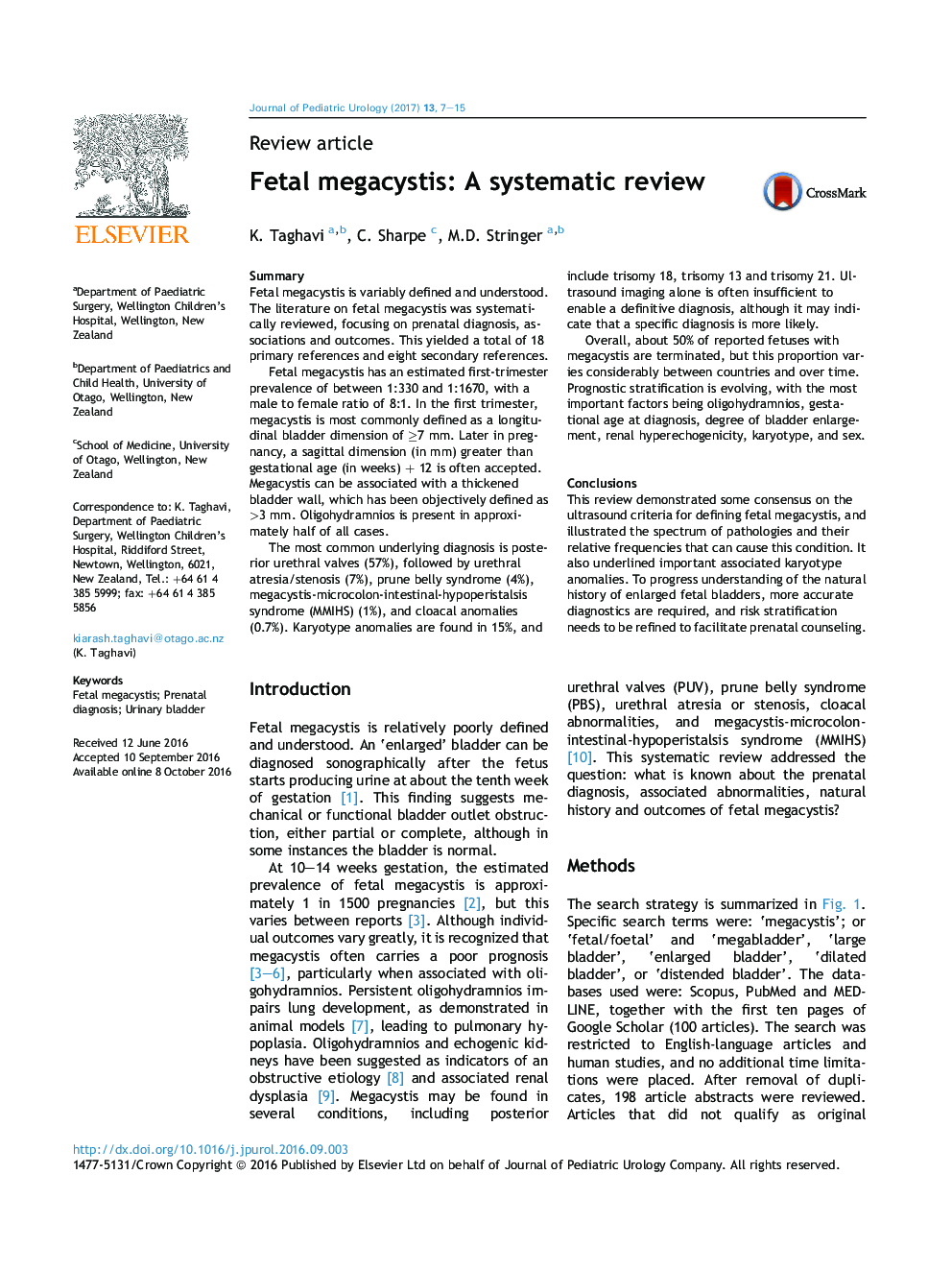| کد مقاله | کد نشریه | سال انتشار | مقاله انگلیسی | نسخه تمام متن |
|---|---|---|---|---|
| 5718629 | 1411255 | 2017 | 9 صفحه PDF | دانلود رایگان |
SummaryFetal megacystis is variably defined and understood. The literature on fetal megacystis was systematically reviewed, focusing on prenatal diagnosis, associations and outcomes. This yielded a total of 18 primary references and eight secondary references.Fetal megacystis has an estimated first-trimester prevalence of between 1:330 and 1:1670, with a male to female ratio of 8:1. In the first trimester, megacystis is most commonly defined as a longitudinal bladder dimension of â¥7 mm. Later in pregnancy, a sagittal dimension (in mm) greater than gestational age (in weeks) + 12 is often accepted. Megacystis can be associated with a thickened bladder wall, which has been objectively defined as >3 mm. Oligohydramnios is present in approximately half of all cases.The most common underlying diagnosis is posterior urethral valves (57%), followed by urethral atresia/stenosis (7%), prune belly syndrome (4%), megacystis-microcolon-intestinal-hypoperistalsis syndrome (MMIHS) (1%), and cloacal anomalies (0.7%). Karyotype anomalies are found in 15%, and include trisomy 18, trisomy 13 and trisomy 21. Ultrasound imaging alone is often insufficient to enable a definitive diagnosis, although it may indicate that a specific diagnosis is more likely.Overall, about 50% of reported fetuses with megacystis are terminated, but this proportion varies considerably between countries and over time. Prognostic stratification is evolving, with the most important factors being oligohydramnios, gestational age at diagnosis, degree of bladder enlargement, renal hyperechogenicity, karyotype, and sex.ConclusionsThis review demonstrated some consensus on the ultrasound criteria for defining fetal megacystis, and illustrated the spectrum of pathologies and their relative frequencies that can cause this condition. It also underlined important associated karyotype anomalies. To progress understanding of the natural history of enlarged fetal bladders, more accurate diagnostics are required, and risk stratification needs to be refined to facilitate prenatal counseling.
Journal: Journal of Pediatric Urology - Volume 13, Issue 1, February 2017, Pages 7-15
